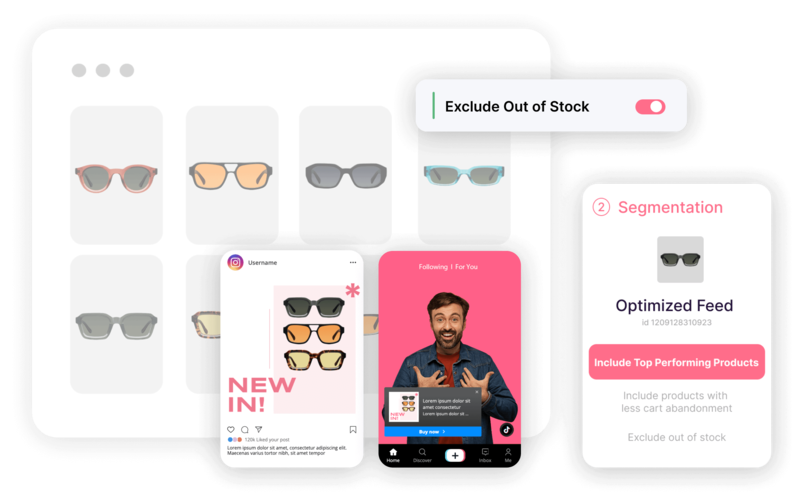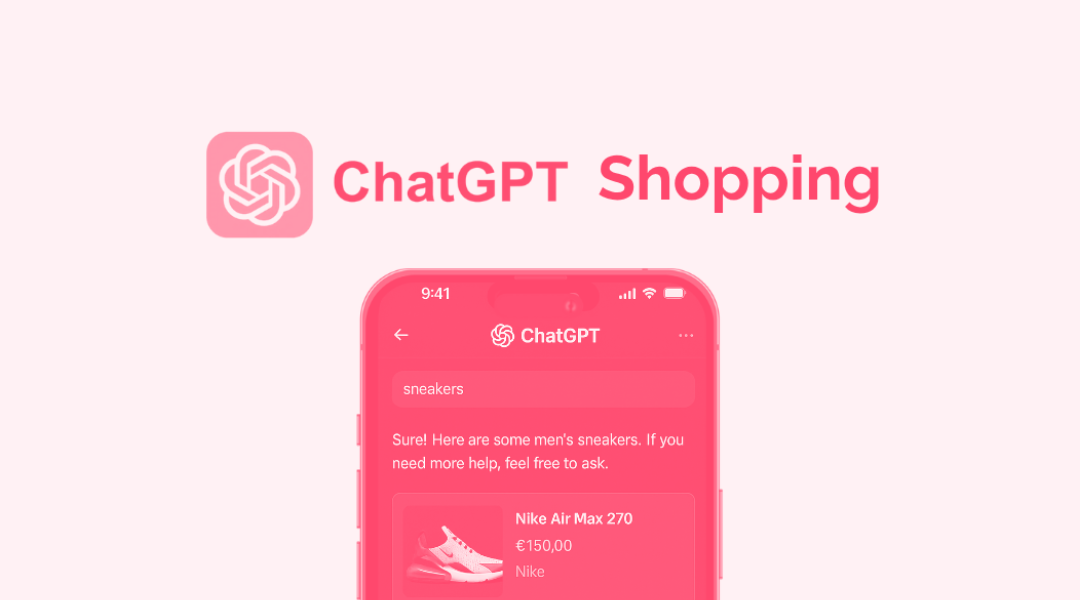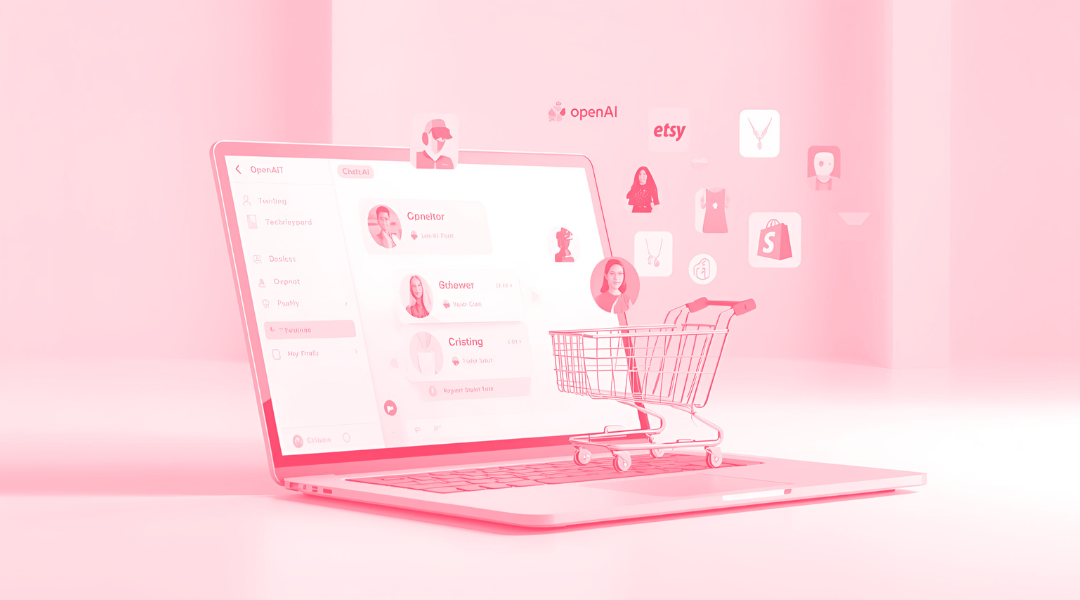ChatGPT Shopping: The future of online shopping starts with a conversation
In recent years, the way we discover and purchase products has changed radically. We’ve moved from browsing physical catalogs to scrolling through...
Plan, activate and control media to hit targets with precision.
Turn data into smart decisions with advanced analytics and modeling.
Efficiency, governance and scale for agencies and teams.
![[Ebook] SEO + AI: eBook to Master AI Overviews and GEO](https://www.adsmurai.com/hubfs/MKT%20-%202025/WEB/Resources%20-%20Banners/HeaderEN_Ebook_SEO+AI.png)
[Ebook] SEO + AI: eBook to Master AI Overviews and GEO
Learn how to structure and distribute your content so generative models can understand it, trust it, and reuse it in their answers. A practical guide to compete and appear in AI Overviews and AI-powered assistants.
Discover more.png)
For years, eCommerce has been in a constant process of optimization: faster stores, more segmented ads, more precise funnels, and automations that felt almost magical. But while eCommerce kept refining its machinery, consumer behavior began to change.
They no longer search for “women’s running shoes size 38” on Google. Now they ask:
“What comfortable shoes do you recommend for running in the morning when it’s cold?”
That small change changes everything.
Because what used to be a keyword-based search is now a conversational interaction powered by artificial intelligence.
And in this new paradigm, ChatGPT Shopping emerges.
TABLE OF CONTENTS
What is ChatGPT Shopping and why is everyone talking about it?
ChatGPT Shopping is OpenAI’s new commercial feature that turns ChatGPT (the popular conversational model) into a smart shopping assistant.
It’s not a marketplace or an integrated online store, but a real-time product recommendation ecosystem powered by connected brand catalogs through eCommerce platforms like Shopify.
The concept is simple yet powerful: users describe what they’re looking for, and ChatGPT responds with personalized suggestions of real products, along with images, descriptions, prices, and direct purchase links.
Imagine a conversation like this:
👤 User: “I want a gift for someone who works from home and loves design.”
🤖 ChatGPT: “You could consider a minimalist lamp with adjustable light, a Nordic-style ergonomic chair, or a silent mechanical keyboard. Here are some options from verified stores.”
What’s interesting is that these options don’t come from a traditional search engine, but from connected product catalogs updated in real time.
This isn't theoretical or something for the distant future: it's already happening. In November 2025, OpenAI launched the Shopping Research feature in ChatGPT just before Black Friday and the Christmas shopping season, positioning the assistant as a digital "personal shopper" capable of comparing products, analyzing reviews, and creating customized shopping guides for each user.
As the company itself explained, the experience is available to users registered on Free, Go, Plus, and Pro plans, both on web and mobile, with almost unlimited use during the shopping season. ChatGPT analyzes product pages, reviews, and prices in real time and returns a personalized shopping guide with options, trade-offs, and direct links to stores to complete the purchase.
The key to this shift towards conversational commerce is the Shopping Research experience: when a user asks a question with purchase intent (“I need a TV for a very bright living room,” “I’m looking for gift ideas for a teenager who plays Switch”), ChatGPT activates a specific workflow that researches products, compares alternatives, and builds a kind of dynamic “buyer’s guide.” The user can refine the results with conversational filters (budget, brand, features, intended use) instead of dealing with 20 open browser tabs.
An optimized feed allows advertising platforms to make smarter decisions.
The result? More precise campaigns, higher CTRs, and better ROI.
Direct advantages:

Example: a brand can highlight different products depending on the time of day or the weather, automatically prioritizing the items with the highest likelihood of conversion.
Behind this technological leap lies a silent but essential foundation: the product catalogs.
They are the backbone of the entire advertising ecosystem and, now, of conversational commerce.
A product catalog (or product feed) is a structured database that contains all the information about the items a brand sells online:
Until now, catalogs were mainly used for:

But with ChatGPT Shopping, catalogs gain a new dimension: they become the language artificial intelligences use to understand what we sell.
By default, ChatGPT uses data found on websites to generate its results.
Pages can be optimized following SEO standards (schema, sitemaps, structured metadata) to help the model correctly interpret the content.
However, the ChatGPT Merchant Program allows approved companies to directly provide a product feed, guaranteeing accurate, up-to-date data that is independent of search engines.
👉 Adsmurai Feeds allows you to send your product catalog to ChatGPT for clients who are part of the Merchant Program, ensuring:
OpenAI has signed several strategic agreements so users can complete purchases directly from the chat. It's no longer just about discovering products, but about closing the sale seamlessly.
The first partners are Shopify, Walmart, and Etsy, and more platforms are expected to join soon.
The ultimate goal: for ChatGPT to function as a standalone sales channel, managed like any marketplace, with product feeds connected to internal inventory systems.
The timing is no coincidence: OpenAI rolled out Shopping Research just before Black Friday and the Christmas shopping season, and in parallel, it's activating Instant Checkout with select retailers, starting with Shopify, so that certain products can be purchased directly within the chat with a single confirmation step. The combination of research and checkout makes ChatGPT more than just an assistant: it's dangerously close to becoming a new sales channel in its own right.
Meanwhile, Gemini (Google) is moving in the same direction.
Products aren't displayed in static listings like on Google Shopping, but rather in contextualized conversational responses generated from the feed data.
If your products meet Google Merchant Center's requirements to appear in free listings, they can be displayed in multiple environments:
Gemini uses the same data source as all of Google's AI: your Google Merchant Center.In other words, optimizing your feed and data structure remains essential for appearing in AI-generated results.
Once Gemini recommends a product, it can offer direct links to relevant sites where customers can learn more or complete a purchase..
Microsoft isn't lagging behind.
With the Copilot Merchant Program, brands can integrate their product catalogs into Copilot, optimizing their web content with the same SEO principles as ChatGPT (schema, sitemap, etc.).
Companies can join the Merchant Program and connect their catalog directly to Microsoft, allowing their products to appear in AI-generated results.
Like ChatGPT and Gemini, Copilot is already testing direct in-app purchases, eliminating intermediate steps and improving conversion rates.
Here’s where a key factor comes into play: feed quality. Unlike a traditional search engine, ChatGPT doesn’t rely on predefined tags or ad bids but on semantic understanding.
For example:
An optimized feed should:
In this context, catalogs are no longer just a technical requirement but a strategic positioning tool in generative AI environments.
Until recently, brands focused their digital visibility on traditional SEO: optimizing pages to appear at the top of Google results.
Today, that territory expands into what we could call SEO for conversational AI.
It’s no longer just about appearing in a SERP, but about being understood and recommended by models like ChatGPT, Gemini, or Perplexity.

This requires a new approach:
The goal is no longer “to be found” but to be correctly interpreted by an AI.
ChatGPT Shopping doesn’t just change how products are discovered — it changes how brands and consumers connect.
Conversation replaces navigation.
Context replaces clicks.
And recommendation replaces banners.
This approach has clear advantages:
In the medium term, this could completely transform how brands create content — shifting from writing for search engines to writing for conversational models.
What we’re seeing with ChatGPT Shopping is just the beginning of a structural change: the fusion of structured data, artificial intelligence, and digital commerce.
In the near future:
The result will be an ecosystem where users don’t have to search for products but express needs. And the brands that best structure, describe, and update their information will be the ones AI recommends first.
In summary
ChatGPT Shopping represents a new phase of eCommerce: more natural, more contextual, and more connected.
It’s no longer just about showcasing an attractive catalog, but about teaching how to properly optimize product data feeds.

In recent years, the way we discover and purchase products has changed radically. We’ve moved from browsing physical catalogs to scrolling through...

Until now, talking to a chatbot was useful for solving questions or finding inspiration.But since September 2025, ChatGPT can complete a full purchase

Instagram Shopping presents itself as an innovation for brands when it comes to establishing dialogue with users, thus helping in the different...